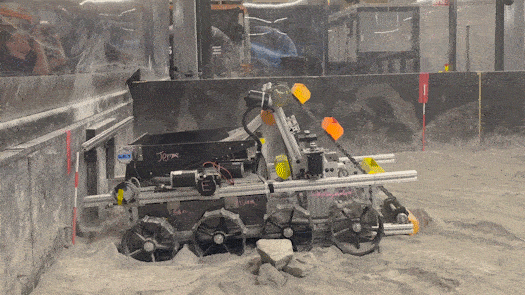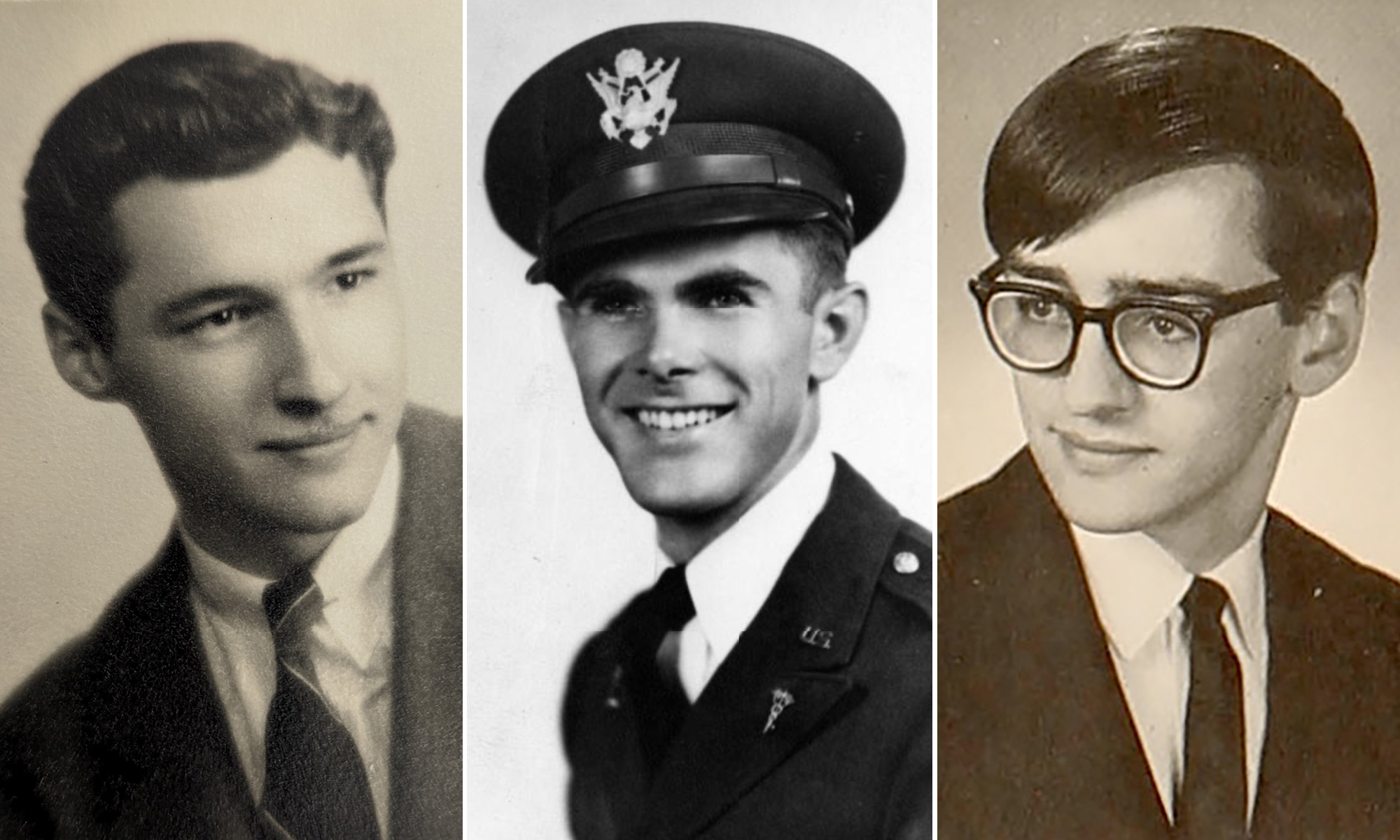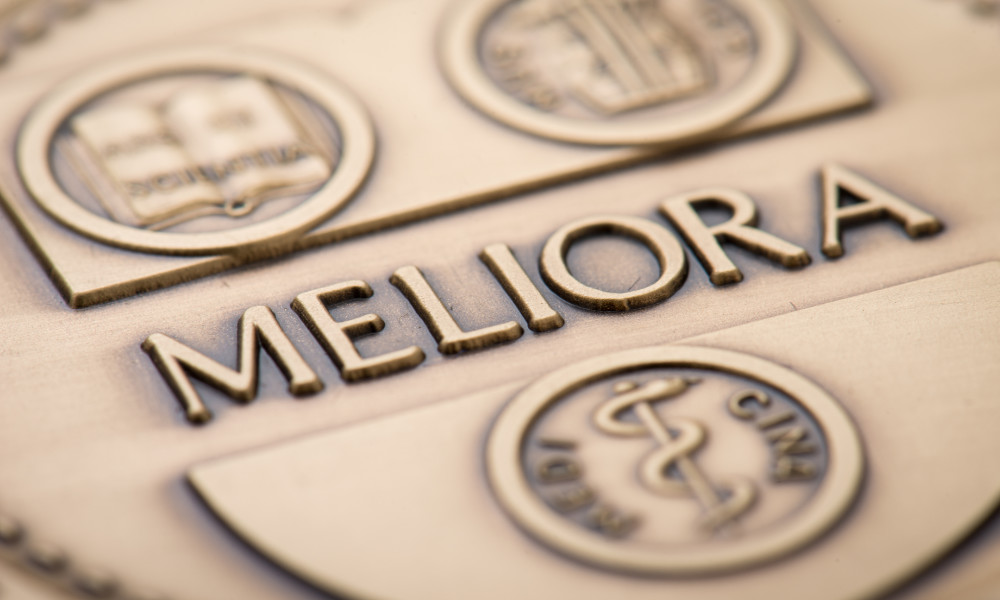Last summer, Hannah Simons and Noah Bertram worked one-on-one with faculty members at the University of Rochester.
Simons ’20, who is majoring in computer science and gender studies, looked at how bills affecting women are edited during the legislative process in order to become laws. Bertram ’21, a math, physics, and economics major, did independent study in math.
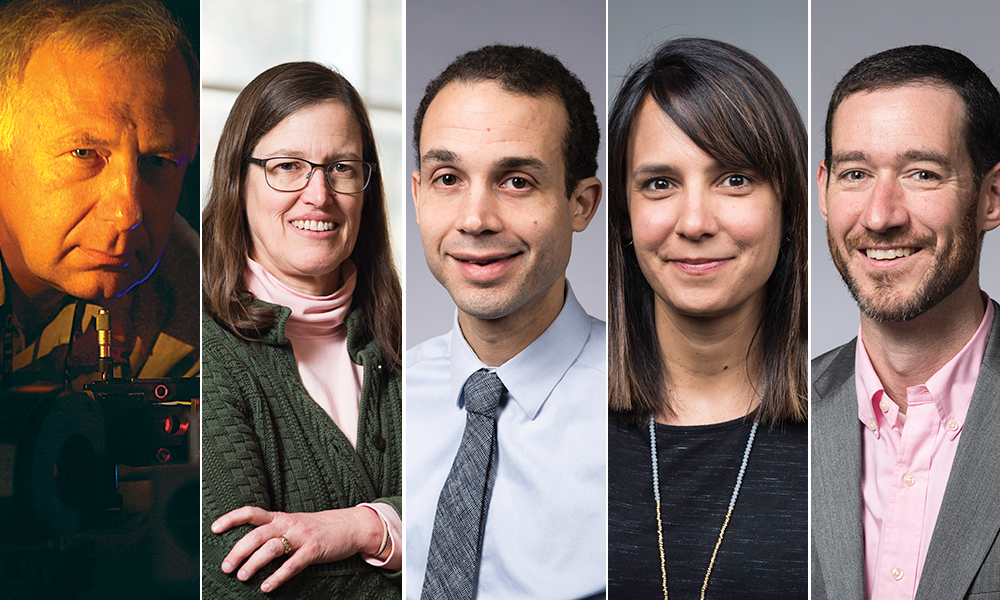
These mentors make a difference for first-generation, minority students
Five University of Rochester faculty mentors are the inaugural recipients of a new mentorship award from the University’s David T. Kearns Center for Leadership and Diversity.
This summer, Simons and Bertram are part a veritable posse of eager young researchers working with Chen Ding, professor of computer science. The team is working to understand the bottleneck that occurs when data must be moved from a computer’s memory to its processor.
“It’s really helpful when I’m stuck on something to be able to ask other people, and to be able to ask for more perspective,” Simons says.
“We will shoot ideas at each other and correct each other’s mistakes. Or sometimes I’ll just ask what someone is working on independently,” Bertram says. “I like it. It’s very social.”
Their experiences illustrate two salient features of the University of Rochester: the open curriculum that gives undergraduate students the freedom to explore multiple disciplines; and the varied opportunities the University offers for students to gain hands-on research experience.
And there’s no better time to do research than during the summer.
“You can devote full time to the research because you don’t have classes and everything else competing for your time,” says Marc Porosoff, an assistant professor of chemical engineering who has three undergraduates working in his lab this summer. “Undergraduates have a much busier course schedule than graduate students, but over the summer everybody’s on the same playing field. Everyone has the same amount of time to devote to research.”
And it definitely helps undergraduates to have research experience on their resumes, Porosoff says. “Whether you are going to graduate school or into industry, having an undergraduate research experience elevates you to another level. A student may not have the highest GPA, but if that student has worked in a lab for an extended amount of time on a single project, and has something to show for it, it elevates that student’s application immediately to the top tier.”
If the research leads to a published paper, with the student listed as co-author, all the better.
IN PICTURES: Summer is research season
(University of Rochester photos / J. Adam Fenster)
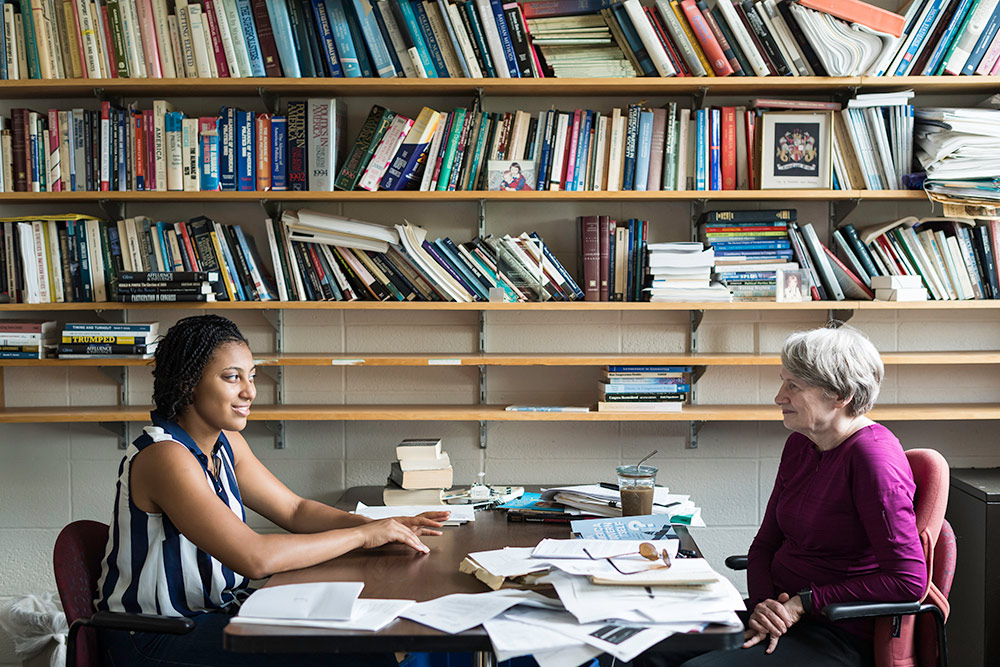
Victoria Dey ’21 is an international relations major from Fairport, New York. This summer, the McNair Scholar is working with political science professor Lynda Powell researching how quickly political parties come to an agreement on an issue, and what factors affect that process. Dey is analyzing years in which deep divisions existed between parties.
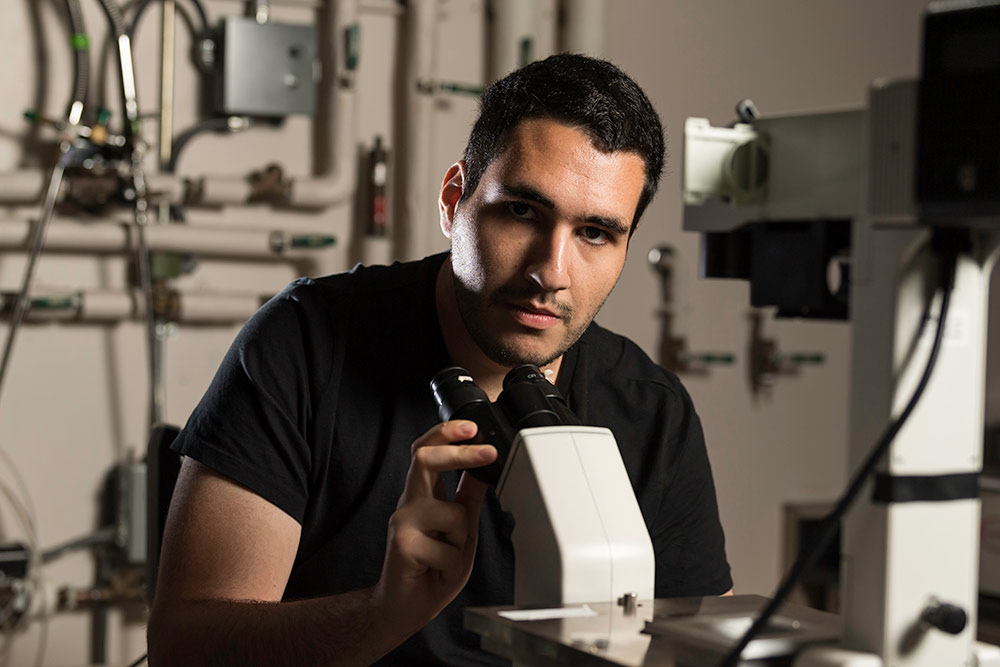
University of Florida senior Daniel Shahar is building an interferometer in chemistry professor Todd Krauss’s lab, with help from University of Rochester graduate student Nicole Cogan. The device will test some fundamental aspects of light from colloidal quantum dot single photon emitters. Shahar is part of the Research Experiences for Undergraduates, or REU, program in photonics and plans to apply to the University for graduate school.
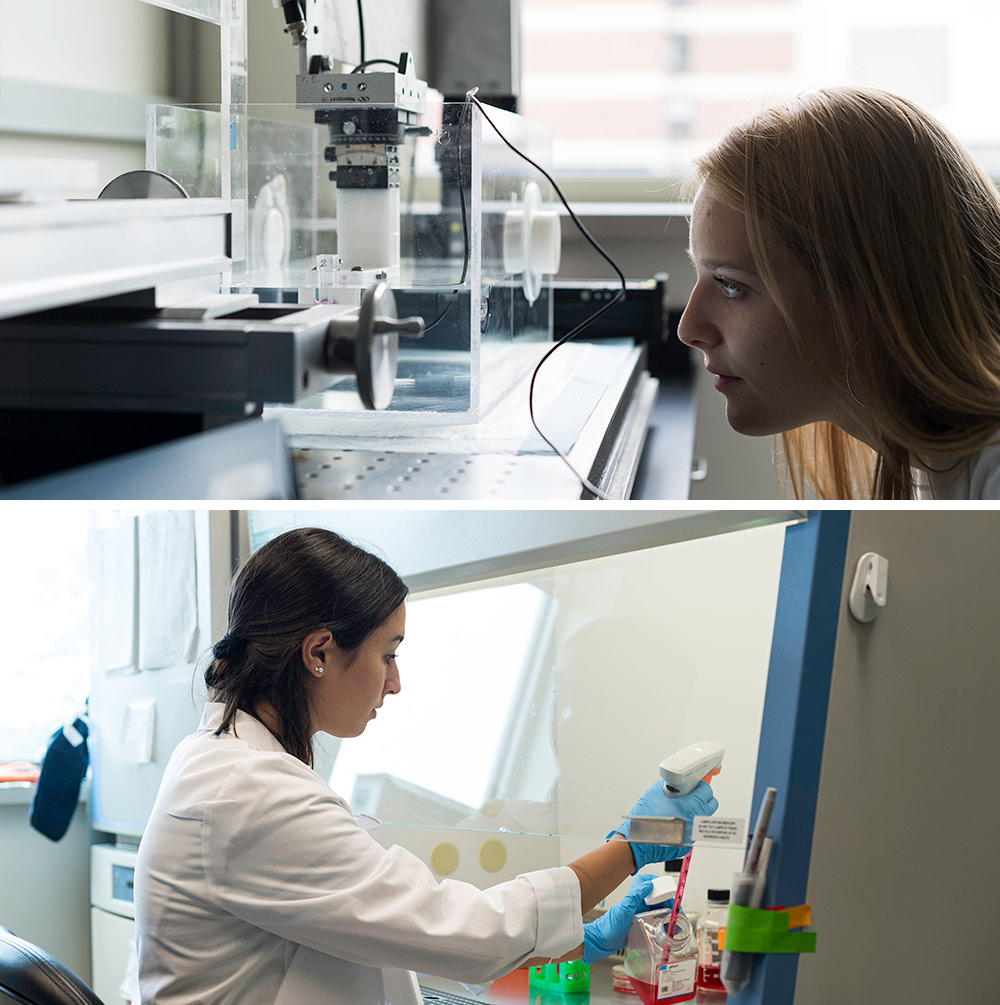
Alyssa Garvin ’21 is part of the REU program “Advancing Human Health: Nano to Network.” The biomedical engineering major from Greenfield, Massachusetts is working in professor Diane Dalecki’s lab on a project that uses ultrasound standing wave fields to non-invasively pattern cells or particles in hydrogels. The project contributes to advancing a novel ultrasound-based technology for fabricating vascularized engineered tissue constructs.
Kelly Lannigan is a senior at Bucknell University majoring in biomedical engineering. She’s also part of the “Advancing Human Health: Nano to Network” REU program, working with professors Diane Dalecki and Denise Hocking on a project to test the ability of a newly formed antibody to detect the extracellular matrix form of fibronectin and recombinant fibronectin fragments. The results of her project will contribute to the broader goal of identifying changes in fibronectin organization in chronic skin wounds.
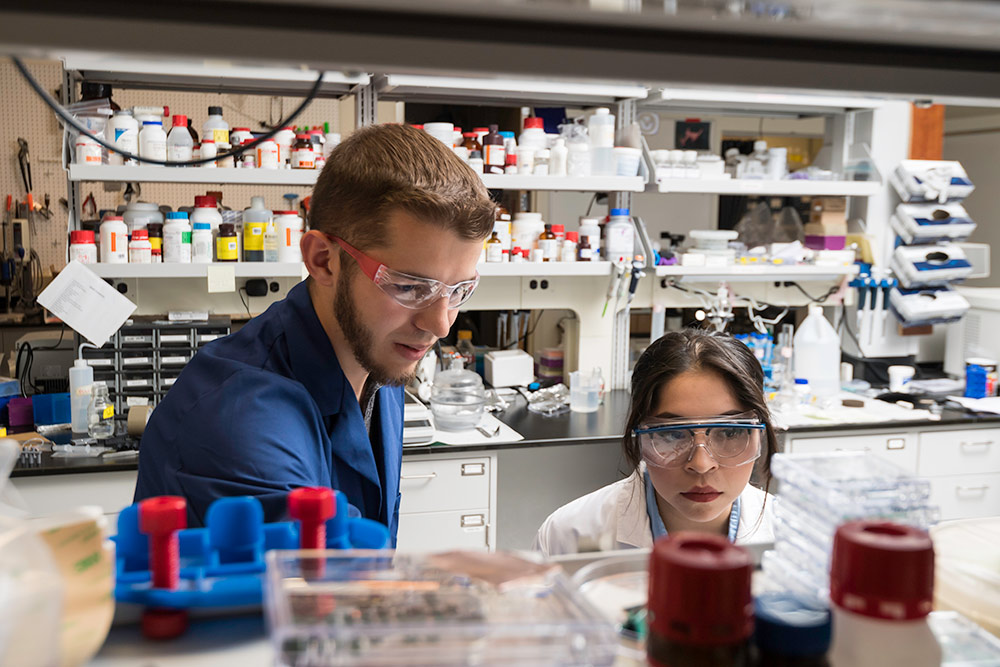 Joanna Chavez ’21 is a chemical engineering student working this summer with Michael Klaczko, a first-year PhD student in chemistry, to develop and refine a potassium electrode sensor in the lab of James McGrath, professor of biomedical engineering. The electrocardiogram readings from someone suffering from the rapid heartbeat related to heart failure and cardiac arrest are remarkably similar to someone suffering hyperkalemia, or high potassium levels. So, it is critical that paramedics have a way to quickly assess what is actually causing such readings when they encounter them on calls. A single drop of blood applied to a test strip would produce a reading within a minute, using ultrathin membranes developed by McGrath’s lab to filter potassium ions from the blood. This is the first research experience for Chavez, a first-generation college student and Kearns Center Scholar from Matamoros Tamaulipas, Mexico. Read more here.
Joanna Chavez ’21 is a chemical engineering student working this summer with Michael Klaczko, a first-year PhD student in chemistry, to develop and refine a potassium electrode sensor in the lab of James McGrath, professor of biomedical engineering. The electrocardiogram readings from someone suffering from the rapid heartbeat related to heart failure and cardiac arrest are remarkably similar to someone suffering hyperkalemia, or high potassium levels. So, it is critical that paramedics have a way to quickly assess what is actually causing such readings when they encounter them on calls. A single drop of blood applied to a test strip would produce a reading within a minute, using ultrathin membranes developed by McGrath’s lab to filter potassium ions from the blood. This is the first research experience for Chavez, a first-generation college student and Kearns Center Scholar from Matamoros Tamaulipas, Mexico. Read more here.
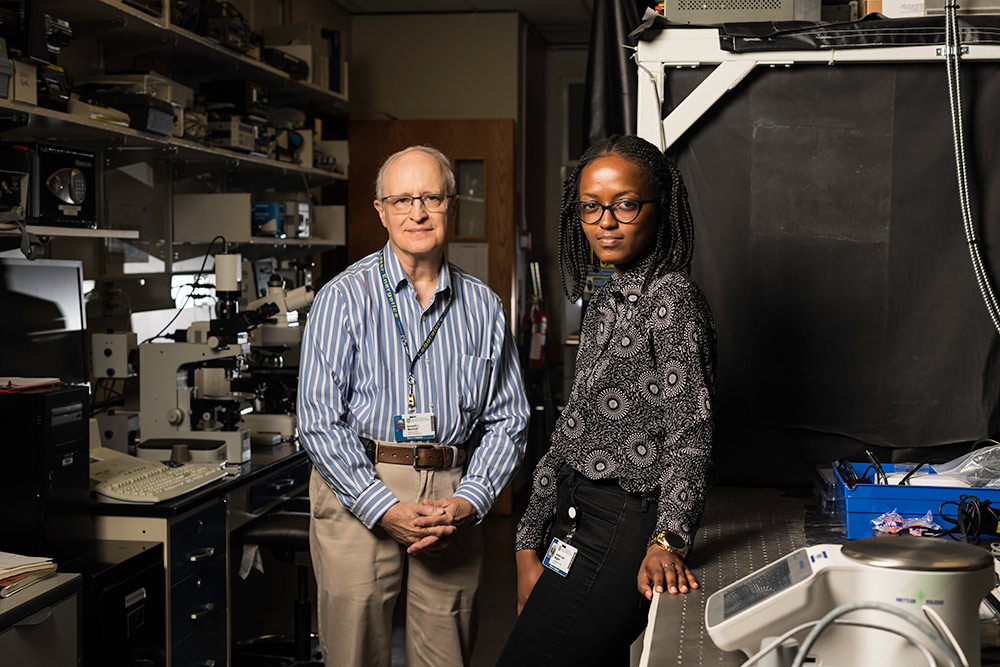
Optics student Jeanne Lyse Mugeni ’21 is a Xerox Research Fellow working this summer in the lab of Kenneth L. Marshall, senior research engineer at the Laboratory for Laser Energetics. Mugeni is using polymer cholesteric liquid crystal, or PCLC, flakes suspended in silicone oils of various viscosities, as a way to visualize the velocity gradients that occur when an air stream is directed across a metal surface. The suspended PCLC flakes reflect light at different wavelengths depending on the angle at which they are illuminated and viewed. This temperature-insensitive combination could be used to visualize airflow patterns over a surface, such as the wing of an aircraft. “The thing I’m learning most is, there’s this independence that comes with doing research,” she says. “You have to be your own teacher at times, and I like that aspect of it.” Read more here.
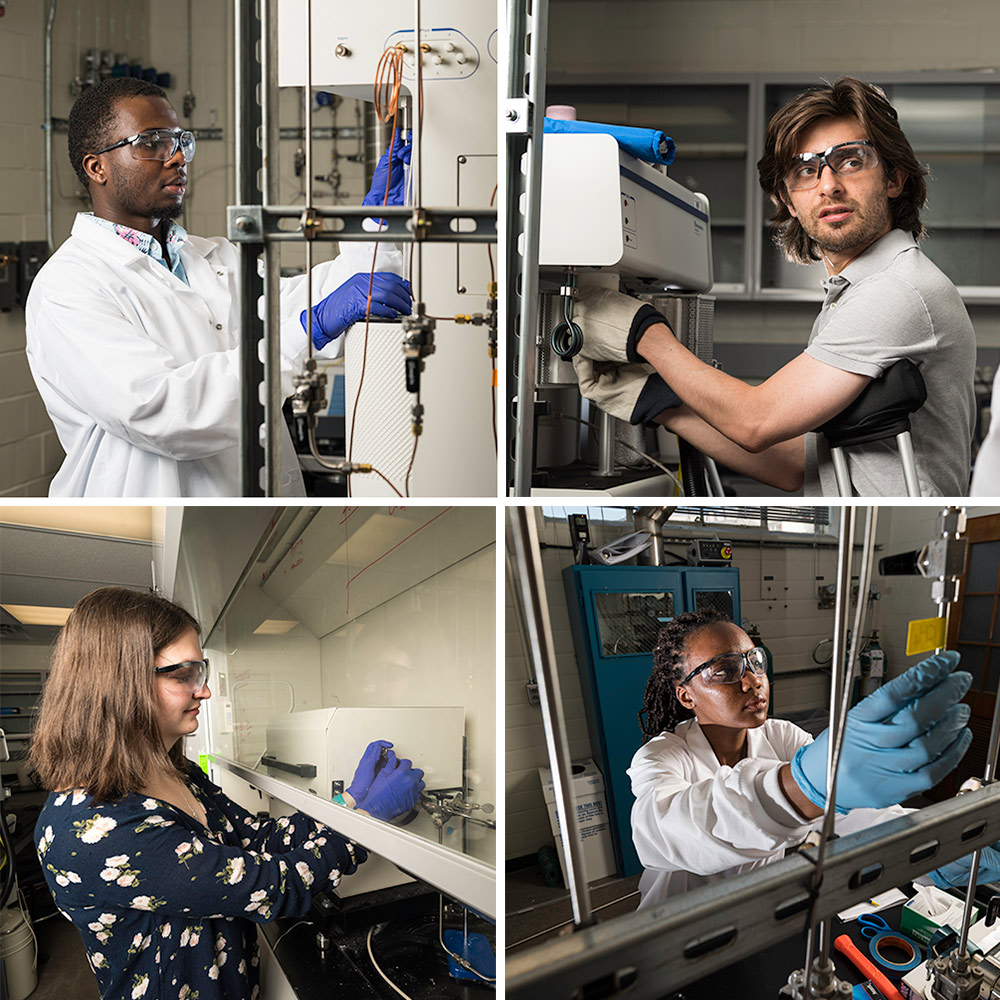
Three undergraduate students are working with Marc Porosoff, assistant professor of chemical engineering, this summer on various projects related to converting the carbon dioxide in the atmosphere into useful products. Aime Laurent Twizerimana ’20 (top left) from the Nyahibu District of Rwanda, and Eve Marealle ’21 (bottom right) from Dar es Salaam, Tanzania, Xerox Engineering Research Fellows; Madeline Vonglis ’20 (bottom left) from Scottsville, New York, is an Eisenberg Summer Intern. Porosoff (top right), who broke his hip at the start of summer in a scooter accident, has taken up residence in an extended care suite in College Town while he recovers, so it will be easier for the students to meet with him. All three students say they are gaining invaluable experience in Porosoff’s lab, and plan to go on to graduate school to further study conversion of carbon dioxide. Read more here.
It takes a team

From top, Hannah Simons ’20, Noah Bertram ’21, and Michael Chavrimootoo ’20 are among eight undergraduates working this summer in the research group of Chen Ding, professor of computer science.
The team is working on optimizing the use of caches to temporarily hold small amounts of data from a computer’s memory. This can ease the bottleneck that occurs when data must be located and then transferred from memory to a processor.
“It’s a challenging problem that has elements of math, algorithm, implementation, experimentation, program design and computer architecture,” says Ding. So, there are plenty of opportunities for students to find specific parts of the project that interest them.
Read more from the Hajim School of Engineering and Applied Sciences.
Students are engaging in research at the University of Rochester this summer in several ways.
There are formal programs, including:
- The Discover Grant program, which provides undergraduates with funding to pursue summer research. This summer 181 undergraduates are working with faculty either on the University of Rochester campus or at other institutions through this program.
- The McNair Scholars summer program, administered by the Kearns Center, which has placed 14 first-generation and/or underrepresented minority students in labs across multiple departments of Arts, Sciences & Engineering
- The Xerox Engineering Research Fellows Program, also administered by the Kearns Center, which has placed 21 rising juniors and seniors in labs run by Hajim School of Engineering and Applied Sciences faculty members.
- Four Research Experiences for Undergraduates, or REU, programs—funded by the National Science Foundation—have brought 47 undergraduates from other universities to the Rochester campus to study a range of topics, from physics, to photonics, computational studies of music and mind, and advancing human health.
- The Eisenberg Summer Internship program, which has placed 10 Department of Chemical Engineering undergraduates in the labs of faculty members in that department.
Other students work in labs all across the University, thanks to funding obtained by individual faculty members—for example, the REU supplemental funding faculty members can obtain in conjunction with their NSF grants to support individual students in their labs. Five of Ding’s students are being funded this way.
‘Chance to get my hands dirty’
University of Florida senior Daniel Shahar, who is participating in the photonics REU, is working in the lab of chemistry professor Todd Krauss. Shahar is building an interferometer with Rochester graduate student Nicole Cogan to test some fundamental aspects of lights from colloidal quantum dot single photo emitters.
The experience has given him “plain, raw experience and a chance to get my hands dirty,” Shahar says. “I told my advisor I was interested in photonics, and he told me Rochester is known for photonics. I’ve really enjoyed my time here, and I plan to apply to graduate school here.”
Students aren’t the only ones who benefit when they get to work in a research lab.
“The undergraduates here are outstanding and that’s why I like to bring so many of them into my lab,” says Porosoff. “We have one of the top schools in the country; it’s a very highly ranked undergraduate institution. So, it would be silly not to take advantage of their abilities.”
Granted, it can take time to get an undergraduate up to speed, Porosoff adds. However, “if you can get an undergraduate engaged in your lab early—say before they start their junior year—and the student really sticks with it, by senior year, that student could be as productive as some graduate students.”
Kenneth L. Marshall, a senior research engineer at the Laboratory for Laser Energetics, has mentored undergraduates in his lab every summer since 1985—ten this summer alone.
Interacting with undergraduates, he says, “keeps you mentally young and on your toes. They sometimes ask very difficult, insightful questions that you have to really think about in order to answer—questions that come off the wall. And because they have a different perspective, and are not necessarily as jaded as those of us who have been around for some time, they’ll look at a problem with fresh eyes and say, ‘Why not do it this way?’”
Besides, Marshall says, “when I impart knowledge to a student, I impart a little bit of myself. Everyone has a unique knowledge set that they accumulate over the span of a scientific or engineering career, and when you share it with students, and they eventually share that with their students and colleagues, that unique accumulated knowledge propagates. Why keep it all to yourself?”

